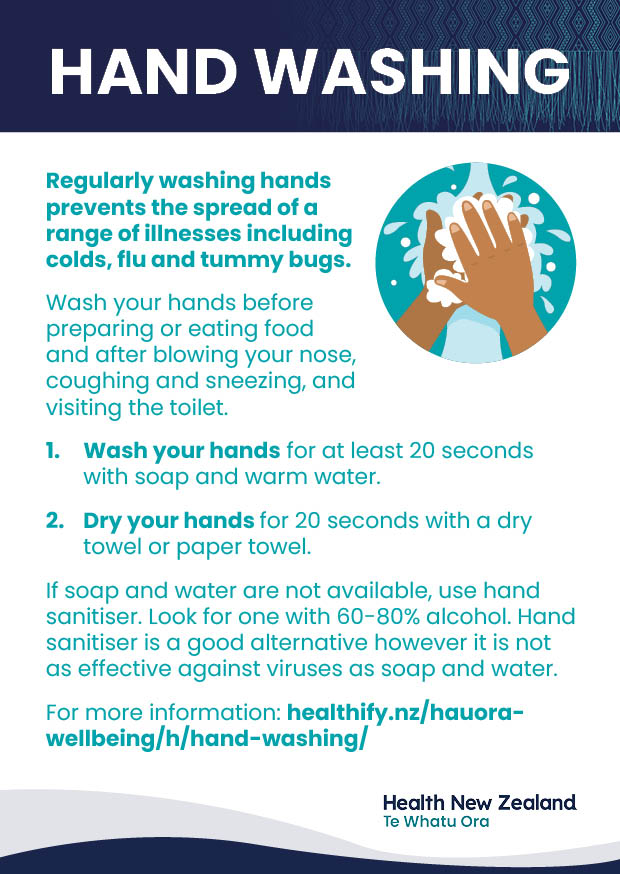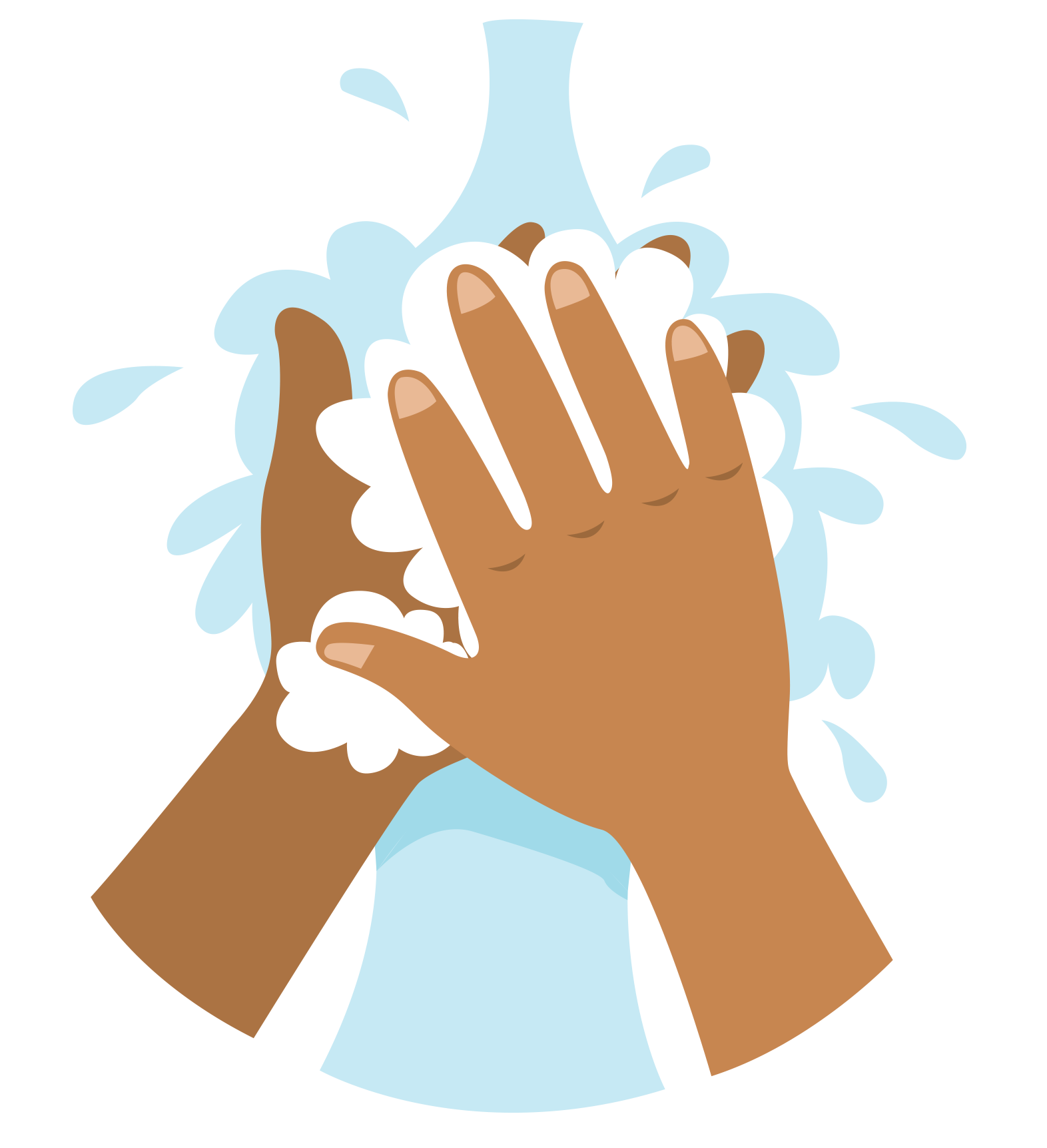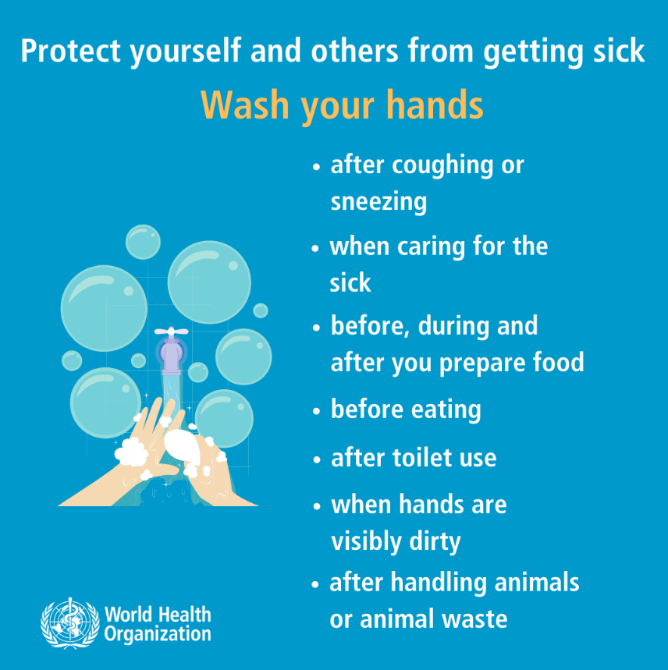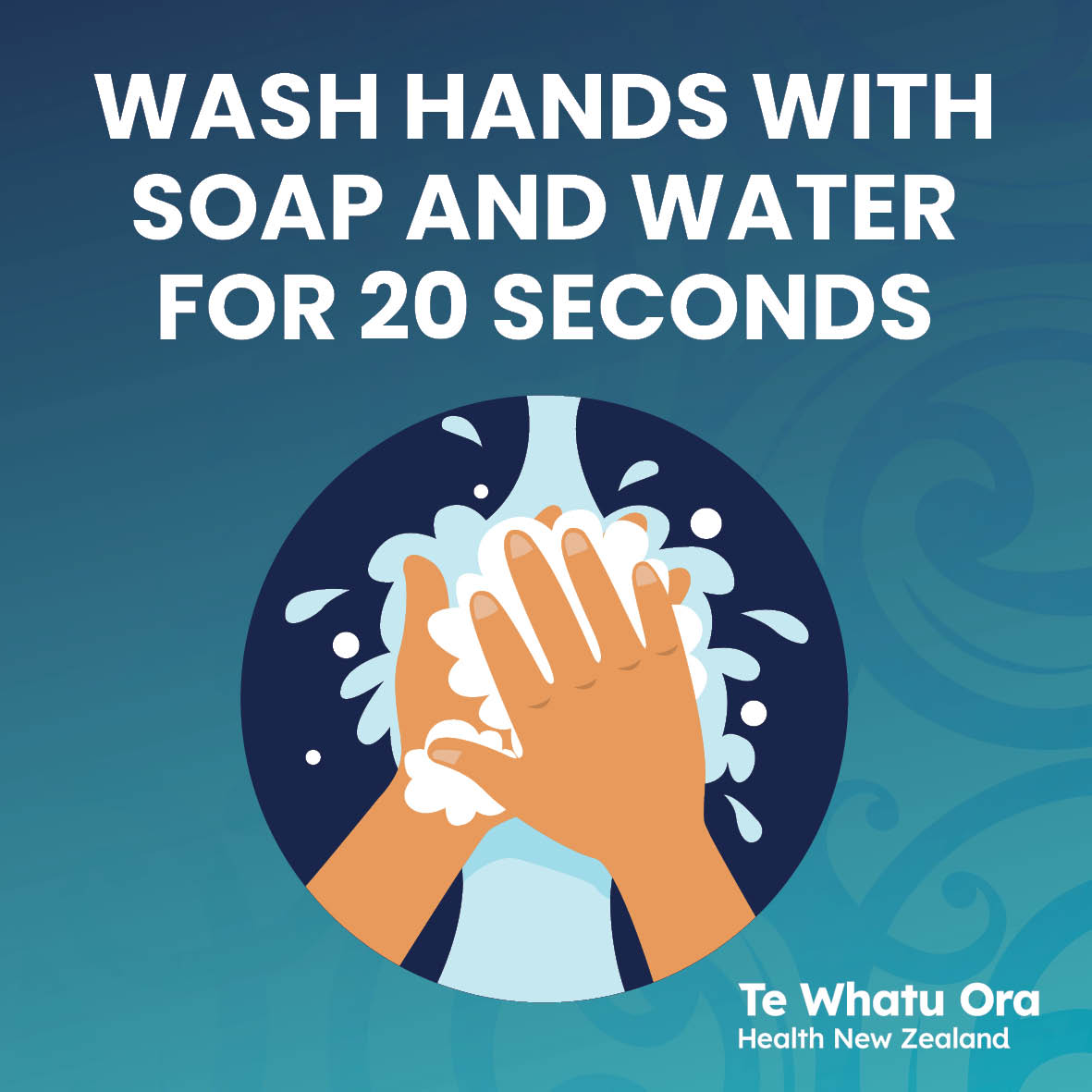Snippets

/handwashingtile-hnz.jpg)
Newsletter Snippet Social media snippet
To follow your own format, use these key messages and imagery:
Key messaging | Imagery |
Regularly washing hands prevents the spread of a range of illnesses including colds, flu and tummy bugs. Wash your hands before preparing or eating food and after blowing your nose, coughing and sneezing, and visiting the toilet. - Wash your hands for at least 20 seconds with soap and warm water.
- Dry your hands for 20 seconds with a dry towel or paper towel.
If soap and water are not available, use hand sanitiser. Look for one with 60-80% alcohol. Hand sanitiser is a good alternative however it is not as effective against viruses as soap and water. For more information: healthify.nz/hauora-wellbeing/h/hand-washing/
|  |
Additional resources
/wash-your-hands.png)


Key messages
Hand hygiene is a very effective way to control the spread of infection. Hand hygiene is a general term that refers to washing hands with soap and water, or using an hand sanitiser (Based on material provided by the Australian National Health and Medical Research Council).
Hands can play an important role in the spread of infection (Figure 1.2). The best way to prevent the transmission of disease is through effective hand hygiene. This can be done with soap and water, which removes both dirt and germs from the hands, or by using an hand sanitiser, which reduces the number of germs on the hand (Based on material provided by the Australian National Health and Medical Research Council).
Soap and water
The most effective method of hand hygiene is using soap and water. Washing your hands with soap and running water loosens, dilutes and flushes off dirt and germs. Water alone can not remove dirt or kill germs. It is the combination of running water, rubbing your hands and the detergent in the soap that helps loosen the dirt, remove the germs and rinse them off your skin (Based on material provided by the Australian National Health and Medical Research Council).
Hand drying
Effective hand drying is just as important as hand washing. Damp hands pick up and transfer up to 1000 times more bacteria than dry hands. Drying your hands thoroughly also helps remove any germs that may not have been rinsed off (Based on material provided by the Australian National Health and Medical Research Council).
Using disposable paper towels to dry hands is the preferred option in centres. Cloth towels, if used, should be used by one person (not shared) and hung up to dry between uses. Cloth towels should be laundered regularly to reduce the risk of recontaminating or cross-contaminating hands (Based on material provided by the Australian National Health and Medical Research Council).
For more information
www.rph.org.nz/public-health-topics/early-childhood-centres/keeping-your-centre-healthy/hand-hygiene/